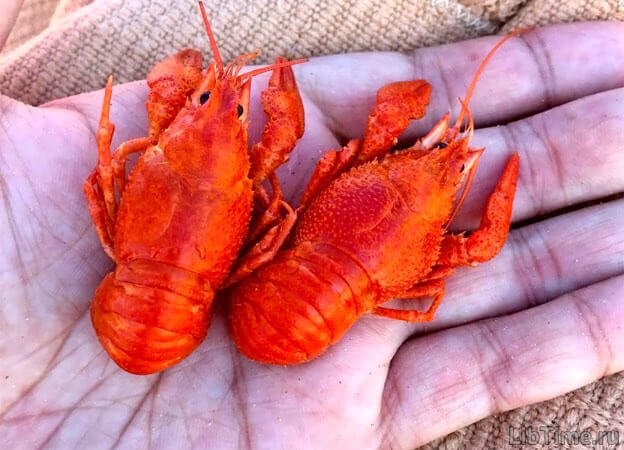Crayfish fishing with your hands
Crayfish fishing by hand is a fascinating activity. The whole company went by boat down the river to the nearest pier. From it we walked along the edge of the coastal forest spreading along a steep slope. On the shore there were a lot of stone blocks overgrown with colorful lichens.
Often there were keys beating from under the sand or among the stones. Along the shore there was a long strip of stony bottom. Here, under the stones, crayfish are kept.
Crayfish fishing with hands under the rocks
The boys went knee-deep into the water, and the eldest of them showed them how to catch crayfish. With one hand they carefully lifted the edge of a stone from the bottom so as not to muddy the water, and with the other hand they grabbed the crayfish found under it. Everyone got involved in a new activity. Not every stone had a crayfish under it, but they were often found on the chosen area of the stony bottom.
Farther from the shore there were more crayfish, but with increasing depth it became more difficult to catch them. In order not to go deep into the water, we wandered along the river. Sometimes we found not a crayfish but a small bullfrog under a raised rock. Having rushed aside, it hid under another stone. Often there were crayfish that had just molted, with thin, soft chitinous cover.
Some had different claws, one large and one small. These animals have the ability to regenerate lost claws: a new one grows in place of the torn off one. We returned home with a cage in which several dozen crayfish were swarming.
Crayfish catching with hands in burrows
Another way is catching crayfish in burrows. We sailed in a boat to the opposite shore and stopped under the cliff. The bottom here is sloping, clayey, slippery, with many crayfish holes. Going in waist-deep, the boy fumbles for them with his feet. Inserting his toes into the burrow, he determines whether it is empty or inhabited.
If the burrow is occupied by a crayfish, the catcher squats down, picks the crayfish with his hand and throws it into a nearby boat. If the burrow is deeper, you have to dive into the water with your head. The crayfish sit in the burrows with their claws out, and they grab the bare fingers that reach out to them.
- Oh, there he goes again!
- sometimes a boy emerging from the water would shriek. Later, the fishermen began to put gloves on their hands. We used to catch crayfish under the steep hill, but when we came back a few days later, there were others in the same holes.
Crayfish catching in algae
We used another way of catching crayfish. One day one of the boys threw densely grown filamentous algae on the shore with an oar. Soon a crayfish crawled out from under the tangled green threads. After that we deliberately threw the overgrown algae on the shore and searched for crayfish among them. Together with them there were small fish, especially finches, frogs, different insects.
After selecting crayfish algae immediately dumped back into the water: let them again give shelter and food to various aquatic animals, including crayfish. We mostly used the caught crayfish as bait for catching fish. On the hook we put the meat of the abdomen, which is usually called the neck, freed from the cover, and the meat of the claws, if they are large enough.
To make the bait more firmly held, it was tied to the hook with a thin white thread. Perch and minnows catch well on crayfish meat.


